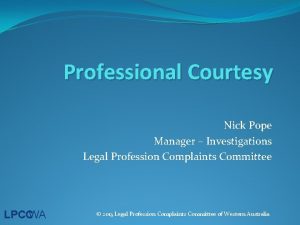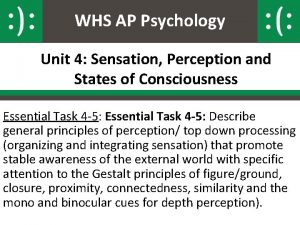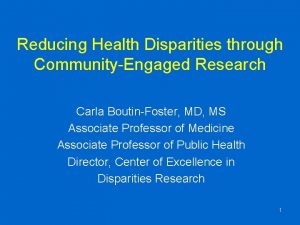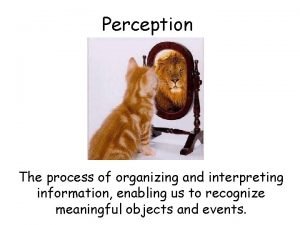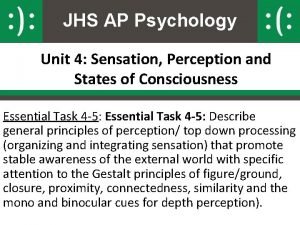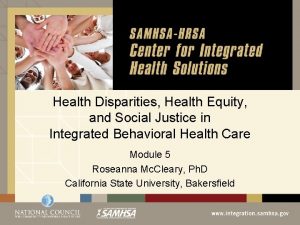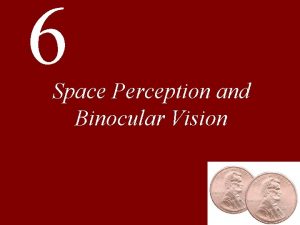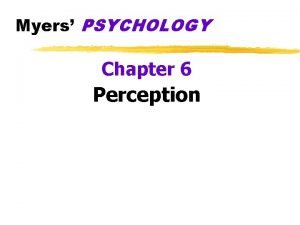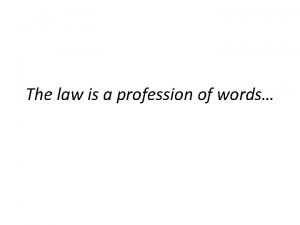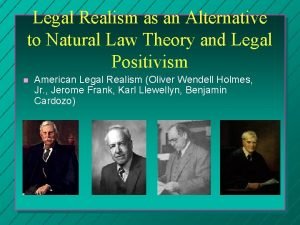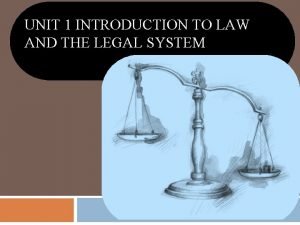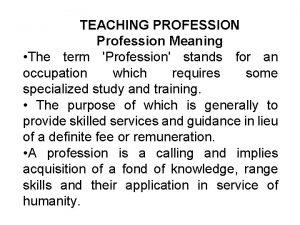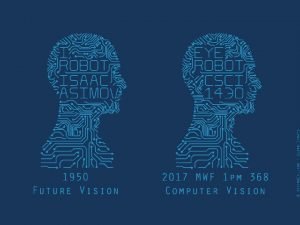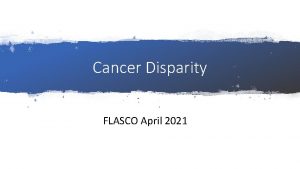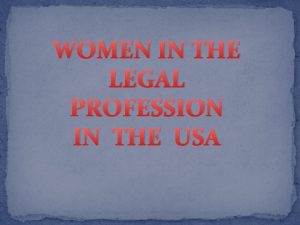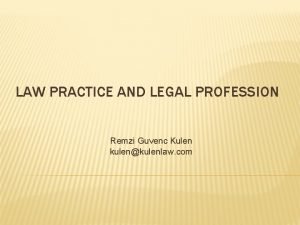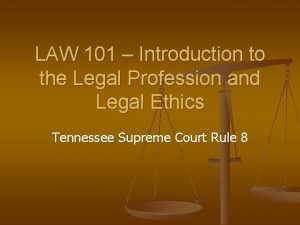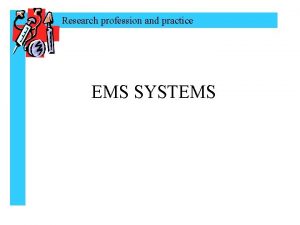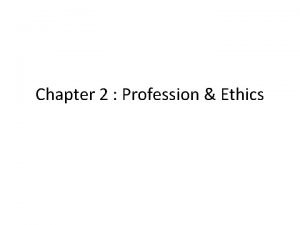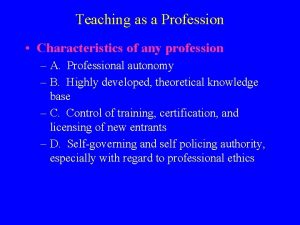Women in the Legal Profession Disparity in Law




























































- Slides: 60

Women in the Legal Profession Disparity in Law School, Inequality as Lawyers Angela N. Johnson www. womenaslawyers. wordpress. com

Why Care About Women’s Inclusion in the Legal Profession? n Like women in congress, women lawyers fought for women’s equality. n Workplace Discrimination n Inclusion to Employment Regardless of Gender n Voting Rights n Clara Foltz, one of the first women lawyers in the U. S. established the public defender system and legal aid clinics. n Women comprise the majority of public interest lawyers.

History of Women as Lawyers • How long have women been included? • How difficult was it for women to become lawyers? • What were reasons for excluding? • Why care about these early pioneers?

Notable Firsts n Margaret Brent -1638 n n First woman to practice law (before licensing requirements) Mary Magoon – 1868 First woman to open a law office. n Permitted to practice at county-level. n n Myra Bradwell – 1869 n n First woman to be denied a law license. Arabella Mansfield – 1869 Granted a license to practice law at just 23 years old. n First woman officially recognized lawyer. n

• First woman to apply for a law license in the U. S. • Illinois law giving married women their own earnings (other states subsequently followed). • In examining the Bradwell’s struggle to obtain a law license, we learn the excuses for women’s exclusion. Prior to applying for a law license, Myra Bradwell published the highly regarded law journal, Chicago Legal News which was respected by male law practitioners.

Denying Women’s Inclusion to the Legal Profession: “By reason of the disability imposed by your married condition” (Since women experienced civil and legal death upon marriage, the court in Bradwell v. Illinois (1869) used this rationale for denying her law license)

“The Paramount destiny and mission of woman (sic) are to fulfill the noble and benign offices of wife and mother. This is the law of the Creator” (Justice Bradley’s Concurring Opinion, 83 U. S. 130 (1873)

“Women were limited to their functions of womanhood, based on their weakness and inability to be rational, maintained by ‘the laws of the creator’” (Meg Gorecki referring to the United States Supreme Court decision in Bradwell v. Illinois (1973))

Women in Law School • • • Are women really in the majority? What proportion of law students are women? Are their experiences different? Are women more likely to drop out? Do women remain in the legal profession post-graduation?

Page 191: “And law schools now admit more women than men. ”

http: //oregonstate. edu/cla/applying-law-school ?


Where did this rumor begin? ? ? Female First Year Enrollment for 2001: 49. 4% Female Total JD Enrollment for 2001: 49. 0% Source: ABA “First Year and Total J. D. Enrollment by Gender, 1947 -2008”


“Entrants” are not equal to “Applicants”

47 19 194 49 8 19 195 51 0 19 195 53 2 19 195 55 4 19 195 57 6 19 195 59 8 19 196 61 0 19 196 63 2 19 196 65 4 19 196 67 5 19 196 69 8 19 197 71 0 19 197 73 2 19 197 75 4 19 197 77 6 19 197 79 8 19 198 81 0 19 198 83 2 19 198 85 4 19 198 87 6 19 198 89 8 19 199 91 0 19 199 93 2 19 199 95 4 19 199 97 6 19 199 99 8 20 200 01 0 20 200 03 2 20 200 05 4 20 200 07 6 20 200 09 8 -2 01 0 19 1 L Enrollment in ABA Accredited Law Schools 35, 000 30, 000 25, 000 20, 000 15, 000 10, 000 5, 000 - First Year Male Enrollment First Year Female Enrollment

47 19 194 49 8 19 195 51 0 19 195 53 2 19 195 55 4 19 195 57 6 19 195 59 8 19 196 61 0 19 196 63 2 19 196 65 4 19 196 67 5 19 196 69 8 19 197 71 0 19 197 73 2 19 197 75 4 19 197 77 6 19 197 79 8 19 198 81 0 19 198 83 2 19 198 85 4 19 198 87 6 19 198 89 8 19 199 91 0 19 199 93 2 19 199 95 4 19 199 97 6 19 199 99 8 20 200 01 0 20 200 03 2 20 200 05 4 20 200 07 6 20 200 09 8 -2 01 0 19 Total JD Enrollment in All ABA Accredited Law Schools 100, 000 90, 000 80, 000 70, 000 60, 000 50, 000 40, 000 30, 000 20, 000 10, 000 - Total JD Male Enrollment Total JD Female Enrollment

Women Applicants v. Admitted Students Percent of all Applicants/Admitted Students 51. 00% 50. 00% 49. 00% 48. 00% 47. 00% 46. 00% 45. 00% 44. 00% 43. 00% 2000 2001 2002 2003 2004 2005 2006 2007 2008 2009 2010 Women Applicants 50. 25%50. 22%49. 73%49. 22%48. 97%48. 63%48. 36%49. 09%49. 29%48. 28%47. 45% Women Admitted 49. 11%49. 19%48. 65%47. 76%47. 33%46. 74%46. 05%47. 22%47. 18%46. 74%45. 88%

% of Women and Men Who Apply and Are Admitted % Women Admits 66. 70% % of Men Admits 66. 34% 63. 94% 61. 23% 2000 49. 19% 2001 48. 65% 2002 65. 48% 66. 45% 60. 61% 56. 05% 49. 11% 64. 15% 56. 89% 54. 03% 47. 76% 47. 33% 46. 74% 46. 05% 2003 2004 2005 2006 47. 22% 47. 18% 46. 74% 45. 88% 2007 2008 2009 2010

Disparity Between Men and Women Admits (Based on % of Applicants) 5. 91% 5. 65% 4. 96% 4. 49% 4. 16% 4. 48% 3. 09% 2000 3. 38% 3. 70% 2. 78% 2. 76% 2001 2002 2003 2004 2005 2006 2007 2008 2009 2010

Women earn lower LSAT Scores but apply with higher undergraduate GPAs. Emphasis on LSAT score hinders women applicants’ competitiveness.

“For women law students, the hardest part of the journey is being allowed to begin” ~A Forked River Runs Through Law School Clydesdale, 2004

In a study of law student classroom participation, the student body makeup was 46% female and 54% male; yet “the average number of times that a male student spoke in class was 38% higher than the average number of times that a female student spoke in class” (Bashi and Iskander 2006, 405). In classes with greater overall class participation, the gender disparity was even greater; men were 52% more likely than women to speak in class. Among student volunteers to participate in classroom discussion, male students volunteered to speak 40% more than female students (Bashi and Iskander 2006, 406). The average number of times that a male student is asked to speak without volunteering is 17% higher than the average number of times that a female student is asked to speak without volunteering (Bashi and Iskander 2006, 407).

A female professor observed that while male students tend to jump to interrupt lectures, female students tend to preface their questions with self-depreciating caveats such as, “I’m sorry, I didn’t get this …” The professor even recalls one student who consistently stated, “I’m really stupid, but. . . ” prior to her questions yet she wrote an outstanding exam in the class (Bashi and Iskander 2006, 407 -408). “Faculty members did not report that women students are less prepared for class; one female professor noted that while volunteers in her class are disproportionately men, male and female students demonstrate the same level of preparation, confidence, and intelligence when she calls on them without warning” (Bashi and Iskander 2006, 408).

Women in Law School • • • Earn higher law school GPAs Speak less frequently in class Volunteer in fewer extracurriculars • • • Hinders resume building Less likely to seek out-of-class time with professors Hindered networking and professional development

Women on Law Review Despite applying in equal numbers, women comprise 44. 3% of law review members but just 33% of Editors in Chief Source: Ms. JD, Women on Law Review, a Gender Diversity Report, accessed February 24, 2011

Law Professors Women Men Clinic & Skills Courses (non-tenure, low prestige) Women 37% 63% Women law professors improve women’s experiences as law students (the greater the portion of women professors, the greater equality for women law students) 55% Men 45%

1981 -1982 -1983 -1984 -1985 -1986 -1987 -1988 -1989 -1990 -1991 -1992 -1993 -1994 -1995 -1996 -1997 -1998 -1999 -2000 -2001 -2002 -2003 -2004 -2005 -2006 -2007 -2008 1 L Attrition Rates for ABA Accredited Law Schools 14. 00% 12. 00% 10. 00% 8. 00% 6. 00% 4. 00% 2. 00% 0. 00% 1 L Male Attrition (% of all male students) 1 L Female Attrition (% of all female students)

Women in Law Post-Graduation • • Are women remaining in law post-graduation? What proportion of judges are women? Is there a “leaky pipeline? ” Future Research: “Where all the women lawyers going? ”


Women in Law Graduates Vs. Working Lawyers Law Degrees Awarded Women Lawyers 48% 49% 50% 49% 48% 47% 48% 46% 45% 45% 43% 44% 25% 30% 29% 28% 29% 27% 26% 33% 34% 32% 1994 1995 1996 1997 1998 1999 2000 2001 2002 2003 2004 2005 2006 2007 2008 2009 Source: ABA JD Degrees Awarded and U. S. Census Employment by Gender

http: //ms-jd. org/files/ms. _jd_lr_8. 23. 2010. pdf

Women as Judges • How many judges are women? • Do women judges rule differently?

Women Candidates and Judicial Elections “Status as incumbents helps men in funding their campaigns, whereas women incumbents receive no similar benefit. Incumbency correlates in a statistically significant way with men’s campaign contributions. In contrast, it has no statistically significant effect on the contributions reported by women. Also, campaign spending (beyond a certain level) has less impact on women’s vote shares than on men’s” Id. at 467.

Having trial or appellate court experiences helped men convince voters to support them but women received no similar electoral boost. Less than 60% of the male candidates had judicial experience while 83% of the women were either current state court judges or had been a trial or appellate court judge. Women raised substantially more money than men, and men, as a group, spent about 70% less on their campaigns than did their female counterparts. Yet only 1. 4% separated their mean shares of the vote. “This means that having stronger credentials and more money, women were unable to parlay electoral assets into sizable electoral gains. ”

Women’s Representation in State Courts http: //www. nawj. org/us _state_court_statistics_2 010. asp


Women on the Federal Bench

Having a female on a three-judge panel federal appellate case increases the likelihood it will find in favor of the plaintiff by 86% in sexual harassment cases; 65% in sex discrimination cases. ” Source: (J. L. Peresie 2005, 1776).

President Clinton proved that increasing women on the federal judiciary doesn’t mean sacrificing quality appointments! He appointed 111 women to the judiciary, many receiving higher American Bar Association ratings than male appointees. Source: Ehrlich and Jurik The Organizational Logic of the Gendered Legal World and Women Lawyer’s Response. 2007.

Presidential Appointments by Gender Male Appointments Female Appointments 347 252 267 226 217 156 111 71 39 36 Barack George W. Bill Obama Bush Clinton 64 36 George Bush 31 Reagan 40 Carter 1 Ford 1 Nixon

Court Total Judgeships % Women U. S. Supreme Court 9 33% U. S. Court of Appeals 179 30. 2% U. S. District Courts 677 28% State Final Appellate Courts 359 31% State Intermediate Appellate Courts 935 31% State Trial Courts 24% 10, 654 Sources: National Association of Women Judges, 2010 United States Supreme Court Women Judges and U. S. Courts Federal/Article III Judgeships.

The Leaky Pipeline to the U. S. Supreme Court Required “Prerequisites” • Formal Requirements (Admission by “Sponsors”) • “Feeder” Court Clerkship Experience (where women only comprise 46% of clerks) which requires: • Elite law school • Law Review and other Accolades • Research for Key Professors and Mentorships • Elite “Gatekeeper” Firm Employment • Years of Experience (a/k/a Survival of the Fittest) • Repeat Litigants (recognition as an elite litigator increases future cases in the court)



Source: The Attorney Gender Gap in U. S. Supreme Court Litigation. Judicature, Volume 91, Number 5.

2010 -2011 Supreme Court Clerks Women 33% Men 67% Justices Roberts, Sotomayor, Breyer, Kagan, and Ginsburg: 2/4 Justices Alito and Thomas: 1/4 Justice Alito: 0/4


The “Evolving enlightenment” of the Supreme Court justices continues to dawn and grow. “I strive to make women’s participation at our Court and in all manner of legal work, not ‘momentous, ” but ‘commonplace. ’” ~Justice Ginsburg, 1998 Wilson Lecture at Wellesley College

U. S. Supreme Court cases studied between 1993 -2001 • Women represented 13. 91% of oral-argument litigants and 25. 52% of “on brief” litigants. • 23% of male litigants and 2% of female litigants had over 26 years of bar experience. • 38% of the oral-argument litigants were previous U. S. Supreme Court clerks and over 60% of the “on brief” litigants were clerks. Source: The Attorney Gender Gap in U. S. Supreme Court Litigation

The attorneys debating the nation’s most important legal questions (and the judges who decide them) are predominantly white male.

Does it matter? O’Connor’s Impact • Ruled favorably for plaintiffs on gender discrimination cases 66%, often breaking precedent by influencing male-colleagues decisions. • Justice Rehnquist increased his support for gender discrimination claimants from 25% to 50%. • Justice Burger from 32. 1% to 50% • Justice Stevens from 57. 1% to 83. 3% • Justice Byron White 69. 8% to 91. 7%.

“A wise old man and a wise old woman reach the same conclusion” ~ Originally stated by Minnesota Supreme Court Justice Jeanne Coyne, restated by Justices O’Connor and Ginsburg • Justice O’Connor and Justice Ginsburg agreed in only 52% of the decisions in the 12 years they served together (1993 -2005). • Agreed cases. in 90% of gender discrimination and abortion

O’Connor’s departure and gender discrimination cases • Ledbetter v. Goodyear Tire and Rubber Company (2007) • AT&T v. Hulteen (2009) • • Both narrowly finding against allegations of workplace discrimination. Ginsburg: “I am convinced that Justice O’Connor would have sided with me in the Ledbetter case, shifting the Court’s ultimate decision to favor complainant Ledbetter. ”

The Last Woman Standing “The Court needs another woman. ” ~Justice Ginsburg USA Today, May 5, 2009.

• Apparent struggle with colleagues during oral argument more apparent after O’Connor’s departure. • Safford Unified School District #1 v. Redding (2009). • • • 13 -year old girl subjected to strip-search. Court held that student’s 4 th Amendment Rights were violated, but school officials were entitled to qualified immunity. Ginsburg’s public disgust by Justice Stephen Breyer’s inability to realize the “traumatic effect that an adolescent girl would experience when forced to strip down to her underclothes in front of school administrators. ”

Reasons for Women’s Inclusion v. Newcomers improve the profession by bringing new perspectives. v. Exclusion sends negative signals to women about their own careers. v. Reflective Justice increases public confidence. v. Women judges are more likely than men to rule favorably to women in gender harassment and discrimination cases.

“Researching Women as Lawyers” www. womenaslawyers. wordpress. com Sharing findings with others in convenient, concise, summaries. Getting the word out about the findings/problem – increase the attention on the issue. Blogging as a professional development tool.

Justices O’Connor and Ginsburg on the U. S. Supreme Court, their experiences, and what their roles have meant for women in the legal profession. 5 -minute clip (law school, SCOTUS, gendered-judging) http: //abcnews. go. com/WNT/video/chat-women-supreme-court 11976773 11 -minute clip (with video of Sotomayor and Kagan) http: //abcnews. go. com/WNT/video/sandra-day-oconnor-ruthbader-ginsburg-womans-perspective-11983540

Bar Association. Enrollment and Degrees Awarded (1947 -2008). Chicago: ABA, 2009. American Bar Association. Total Female J. D. Attrition; Total Male J. D. Attrition (1981 -2008). Chicago: ABA, 2009. Anderson, Michelle J. "A Legal Education Prospectus: Law Schools & Emerging Frontiers: Legal Education Reform, Diversity, and Access to Justice. " Rutgers Law Review, 2009: 1011 -1036. Bashi, Sari, and Maryana Iskander. "Why Legal Education is Failing Women. " Yale Journal of Law and Feminism, 2006: 389 -449. Batlan, Felice, Kelly Hradsky, Kristen Jeschke, La. Vonne Meyer, and Jill Roberts. "Not Our Mother's Law School? : A Third-Wave Feminist Study of Women's Experiences in Law School. " The University of Baltimore Law Forum, Spring 2009: 124 -151. Berger, Sarah, Angela Olivia Burton, Peggy Cooper Davis, Elizabeth Ehrenfest Steinglass, and Robert Levy. “Hey! There's Ladies Here!!” New York University Law Review, June 1998: 1022 -1063. Bradwell v. Illinois (1873). 83 U. S. 130 (United States Supreme Court). Carlson, Heather A. "Book Review: Faculty Mentoring as a Way to End the Alienation of Women in Legal Academia: Becoming Gentlemen: Women, Law School and Institutional Change. " Boston College Third World Law Journal, 1998: 317 -338. Clark, Mary L. “Carter's Groundbreaking Appointment of Women to the Federal Bench: His Other "Human Rights" Record. ” American University Journal of Gender, Social Policy & the Law, 2003: 1131 -1163. Clark, Mary L. “Why Care About the History of Women in the Legal Profession? ” Women's Rights Law Reporter, Spring 2006: 59 -68. Clydesdale, Timothy T. A Forked River Runs Through Law School: Toward Understanding Race, Gender, Age, and Related Gaps in Law School Performance and Bar Passage. Chicago: American Bar Foundation Law and Social Inquiry, 2004. Commission on Women in the Profession. Charting Our Progress: The Status of Women in the Profession Today. Chicago: American Bar Association, 2006. Cunnea, Professor. A Timeline of Women's Legal History in the United States. http: //wlh-static. law. stanford. edu/articles/cunnea-timeline. pdf (accessed 2011 йил 11 -March). Ehrlich Martin, Susan, and Nancy C. Jurik. The Organizational Logic of the Gendered Legal World and Women Lawyers' Response. Thousand Oaks: Sage Publications, Inc. , 2007. Flanagan, Rebecca. "Lucifer Goes to Law School: Towards Explaining and Minimizing Law Student Peer-to-Peer Harassment and Intimidation. " Washburn Law Journal, 2008: 453 -469. Ginsburg, Ruth Bader, and Laura W. Brill. “Women in the Federal Judiciary: Three Way Pavers and the Exhilarating Change President Carter Wrought. ” Fordham Law Review LXIV, no. 2 (November 1995): 281 -290. Honigsberg, Colleen. "Closing the LSAT Gender Gap. " The Daily Pennsylvanian, January 2008. Jordan, Gwen Hoerr. “"Horror of a Woman": Myra Bradwell, the 14 th Amendment, and the Gendered Origins of Sociological Jurisprudence. ” Akron Law Review, 2009: 12011242. Law School Admissions Council. Volume Summary Admitted Applicants by Ethnic & Gender Group. Data Report, LSAC, 2009. Law School Admissions Council. Volume Summary Applicants by Ethnic & Gender Group. Data Report, LSAC, 2009. Law School Survey of Student Engagement. 2010 Annual Survey Results. Bloomington: Indiana University Center for Postsecondary Research, 2010. Mc. Ginley, Ann C. “Reproducing Gender on Law School Faculties. ” Brigham Young University Law Review, 2009: 99 -155. Ms. JD. Women on Law Review: A Gender Diversity Report. Survey, Ms. JD, 2010. National Women's Law Center. "Women in the Federal Judiciary: Still a Long Way to Go. " www. nwlc. org. March 8, 2011. http: //www. nwlc. org/resource/women-federaljudiciary-still-long-way-go 1 (accessed March 21, 2011). O'Connor, Karen. "Judging Alone: Reflections on the Importance of Women on the Court. " Politics & Gender, 2010: 441 -452. Palmer, Barbara. "To Do Justly: The Integration of Women into the American Judiciary. " Political Science and Politics 34, no. 2 (June 2001): 235 -239. Peresie, Jennifer L. "Female Judges Matter: Gender and Collegial Decisionmaking in the Federal Appellate Courts. " The Yale Law Journal (The Yale Journal Company, Inc. ) 114, no. 7 (May 2005): 1759 -1790. For entire list, see http: //womenaslawyers. wordpress. com/source-citations/
 Professional courtesy examples
Professional courtesy examples Color constancy ap psychology
Color constancy ap psychology Health disparity definition
Health disparity definition Binocular cues
Binocular cues Binocular disparity
Binocular disparity Retinal disparity psychology
Retinal disparity psychology Binocular disparity depth perception
Binocular disparity depth perception Health disparity definition
Health disparity definition Binocular vision and space perception
Binocular vision and space perception Visual cliff paradigm
Visual cliff paradigm Cortex striata
Cortex striata Retinal disparity definition psychology
Retinal disparity definition psychology Depth from disparity
Depth from disparity Byzantine empire
Byzantine empire Law is a profession of words
Law is a profession of words Newton's first law and second law and third law
Newton's first law and second law and third law Newton's first law of motion
Newton's first law of motion Boyle's law charles law avogadro's law
Boyle's law charles law avogadro's law Constant of avogadro's law
Constant of avogadro's law Positive law vs natural law
Positive law vs natural law Mount isa legal aid
Mount isa legal aid Unit 1 introduction to law and the legal system
Unit 1 introduction to law and the legal system Hát kết hợp bộ gõ cơ thể
Hát kết hợp bộ gõ cơ thể Slidetodoc
Slidetodoc Bổ thể
Bổ thể Tỉ lệ cơ thể trẻ em
Tỉ lệ cơ thể trẻ em Chó sói
Chó sói Tư thế worm breton là gì
Tư thế worm breton là gì Hát lên người ơi alleluia
Hát lên người ơi alleluia Các môn thể thao bắt đầu bằng tiếng đua
Các môn thể thao bắt đầu bằng tiếng đua Thế nào là hệ số cao nhất
Thế nào là hệ số cao nhất Các châu lục và đại dương trên thế giới
Các châu lục và đại dương trên thế giới Công thức tính độ biến thiên đông lượng
Công thức tính độ biến thiên đông lượng Trời xanh đây là của chúng ta thể thơ
Trời xanh đây là của chúng ta thể thơ Cách giải mật thư tọa độ
Cách giải mật thư tọa độ 101012 bằng
101012 bằng Phản ứng thế ankan
Phản ứng thế ankan Các châu lục và đại dương trên thế giới
Các châu lục và đại dương trên thế giới Thể thơ truyền thống
Thể thơ truyền thống Quá trình desamine hóa có thể tạo ra
Quá trình desamine hóa có thể tạo ra Một số thể thơ truyền thống
Một số thể thơ truyền thống Cái miệng nó xinh thế
Cái miệng nó xinh thế Vẽ hình chiếu vuông góc của vật thể sau
Vẽ hình chiếu vuông góc của vật thể sau Biện pháp chống mỏi cơ
Biện pháp chống mỏi cơ đặc điểm cơ thể của người tối cổ
đặc điểm cơ thể của người tối cổ V cc cc
V cc cc Vẽ hình chiếu đứng bằng cạnh của vật thể
Vẽ hình chiếu đứng bằng cạnh của vật thể Tia chieu sa te
Tia chieu sa te Thẻ vin
Thẻ vin đại từ thay thế
đại từ thay thế điện thế nghỉ
điện thế nghỉ Tư thế ngồi viết
Tư thế ngồi viết Diễn thế sinh thái là
Diễn thế sinh thái là Dạng đột biến một nhiễm là
Dạng đột biến một nhiễm là Số nguyên tố là gì
Số nguyên tố là gì Tư thế ngồi viết
Tư thế ngồi viết Lời thề hippocrates
Lời thề hippocrates Thiếu nhi thế giới liên hoan
Thiếu nhi thế giới liên hoan ưu thế lai là gì
ưu thế lai là gì Sự nuôi và dạy con của hươu
Sự nuôi và dạy con của hươu Khi nào hổ con có thể sống độc lập
Khi nào hổ con có thể sống độc lập
